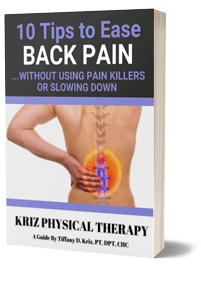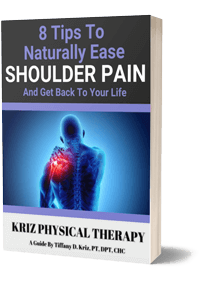Whether you’re swinging a golf club, serving a tennis ball, or stretching for a tricky shot in pickleball, one thing remains constant—your body’s alignment. Good posture is more than just standing tall; it’s about how your entire body moves and functions. And when it comes to preventing injury, it’s one of the most important pieces of the puzzle.
Let’s take a deep dive into how posture and alignment play a critical role in injury prevention, especially for adults who love staying active through recreational sports.
Why Posture Matters in Injury Prevention
Poor posture is more than just a cosmetic issue. When your body falls out of its natural alignment, muscles that are meant to support and stabilize you can become weak or overworked. This imbalance increases stress on joints and tissues, setting the stage for strain, fatigue, and eventually, injury.
Imagine a tennis player with forward head posture and rounded shoulders. Over time, this alignment can lead to shoulder impingement or chronic neck pain. A golfer with poor spinal alignment may develop low back issues after repeated swings. Even in pickleball—a sport full of quick direction changes—poor posture can affect balance and coordination, increasing the risk of falls or sprains.
The takeaway? Injury prevention begins with restoring and maintaining proper alignment in your spine, shoulders, hips, and feet.
How Poor Posture Leads to Injury
When posture isn’t optimal, your body adapts in unhealthy ways. These adaptations might not cause problems right away, but they silently place more pressure on certain muscles and joints until one day—something gives.
Here are a few common patterns:
- Rounded shoulders and forward head posture: Often caused by desk jobs or long hours on devices. This posture strains the neck and upper back and can eventually cause nerve compression, shoulder pain, and tension headaches.
- Anterior pelvic tilt: When the pelvis tilts forward, it exaggerates the lumbar curve, placing stress on the low back and tightening the hip flexors. This leads to weakness in the glutes and core—a recipe for back pain.
- Flat feet or collapsed arches: When your feet lack proper arch support, your knees and hips may overcompensate, increasing the likelihood of injuries from the ground up.
All of these contribute to joint degeneration, overuse injuries, and recurring discomfort that can interrupt your ability to play and enjoy life.
Common Postural Problems and Their Effects
Let’s break down a few of the most common postural issues and how they impact your movement and injury risk:
- Forward Head Posture
This posture shifts your head forward from its natural position, increasing stress on your neck and upper back muscles. For every inch your head moves forward, the load on your cervical spine increases significantly. - Rounded Shoulders
Often paired with forward head posture, this misalignment restricts shoulder mobility and increases the risk of impingement syndromes—especially problematic for sports involving overhead movements like tennis or serving in pickleball. - Slouched Spine or Kyphotic Posture
A rounded thoracic spine can impact lung capacity and decrease your ability to rotate through your mid-back—a key movement for swinging in golf and tennis. - Uneven Hips or Leg Length Discrepancy
These can lead to overuse on one side of the body and increase risk of lower back or hip issues. You might not notice the asymmetry until pain appears.
The good news is that with awareness and intentional movement, many of these issues can be improved—or prevented entirely.
How Physical Therapy Supports Posture and Injury Prevention
Correcting posture isn’t just about sitting up straight or pulling your shoulders back. It’s a comprehensive process that involves retraining your body’s muscles, addressing restrictions, and building strength in supportive areas.
Physical therapy is uniquely positioned to guide this process. Through a combination of assessment, manual therapy, and personalized exercises, a physical therapist can help you:
- Identify the root causes of your postural imbalances
- Re-educate muscles that have become weak or overactive
- Improve range of motion and mobility in stiff joints
- Teach movement strategies that reduce strain on vulnerable areas
By restoring balance in your body, physical therapy builds a strong foundation for injury prevention—especially for adults who want to stay active into their 50s, 60s, and beyond.
Tips to Improve Posture in Everyday Life
While formal physical therapy plays a crucial role, there’s a lot you can do on your own to maintain better posture and alignment throughout your day:
- Set a Timer for Movement
If you sit for long periods, get up every 30 to 60 minutes to walk around or stretch. Movement resets your spine and reactivates core muscles. - Use Supportive Seating
Place a rolled towel or lumbar support behind your lower back when sitting for long periods—especially in the car or at a desk. - Check Your Screens
Your monitor or phone should be at eye level to avoid slouching or craning your neck. Consider using a stand or raising your laptop with books. - Balance Your Standing Posture
Whether you’re cooking, working in the garage, or waiting in line, keep your weight evenly distributed over both feet and avoid locking your knees. - Breathe Deeply
Shallow chest breathing can reinforce poor posture. Deep, diaphragmatic breathing not only reduces stress but also helps reset spinal alignment.
The Role of Core Strength in Alignment
A strong core does more than give you stability on the court—it’s a vital component of injury prevention. Your core acts like a brace for your spine, keeping everything aligned and supported during movement.
Without a solid core, your back muscles and joints take on more strain. This imbalance is especially noticeable in dynamic activities like:
- Rotating through a golf swing
- Lunging during a pickleball game
- Twisting to return a tennis serve
Core exercises don’t need to be extreme or complex. In fact, simple, intentional movements are often the most effective:
- Pelvic Tilts
- Bridge Lifts
- Bird-Dog Exercises
- Side Planks (modified if needed)
These exercises build endurance, coordination, and stability—key ingredients to move well and stay injury-free.
Injury Prevention Is a Daily Practice
There’s no quick fix for posture—but the payoff is well worth the effort. The habits you build each day can either protect you from injury or quietly contribute to it. Think of posture as your body’s default setting. The more you train it into proper alignment, the more automatic it becomes during your favorite activities.
Whether you’re on the course, court, or just living life—posture influences how efficiently and comfortably you move. And when you move better, you feel better.
Final Thoughts: Take the First Step Toward Better Posture
Improving posture isn’t about perfection—it’s about progress. It’s about choosing small, consistent steps that help you stay strong, balanced, and pain-free doing the things you love most.
If you’re unsure where to start, or if you’ve noticed recurring aches and pains that could be tied to your posture, consider scheduling a postural assessment with a physical therapy provider near you. A personalized evaluation can identify the imbalances that may be limiting your performance or putting you at risk.
Even if you’re not currently injured, prevention is always better than recovery. By addressing your posture now, you can build a solid foundation for lifelong movement—and keep playing pickleball, tennis, golf, or whatever brings you joy—for years to come.




